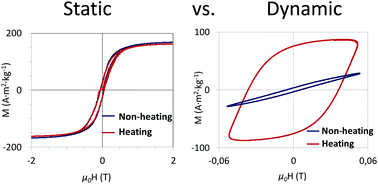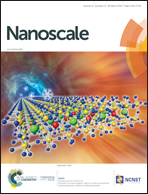To heat or not to heat: a study of the performances of iron carbide nanoparticles in magnetic heating†
Abstract
Heating magnetic nanoparticles with high frequency magnetic fields is a topic of interest for biological applications (magnetic hyperthermia) as well as for heterogeneous catalysis. This study shows why FeC NPs of similar structures and static magnetic properties display radically different heating power (SAR from 0 to 2 kW g−1). By combining results from Transmission Electron Microscopy (TEM), Dynamic Light Scattering (DLS) and static and time-dependent high-frequency magnetic measurements, we propose a model describing the heating mechanism in FeC nanoparticles. Using, for the first time, time-dependent high-frequency hysteresis loop measurements, it is shown that in the samples displaying the larger heating powers, the hysteresis is strongly time dependent. More precisely, the hysteresis area increases by a factor 10 on a timescale of a few tens of seconds. This effect is directly related to the ability of the nanoparticles to form chains under magnetic excitation, which depends on the presence or not of strong dipolar couplings. These differences are due to different ligand concentrations on the surface of the particles. As a result, this study allows the design of a scalable synthesis of nanomaterials displaying a controllable and reproducible SAR.

- This article is part of the themed collection: International Year of the Periodic Table: Applications for magnetic materials


 Please wait while we load your content...
Please wait while we load your content...